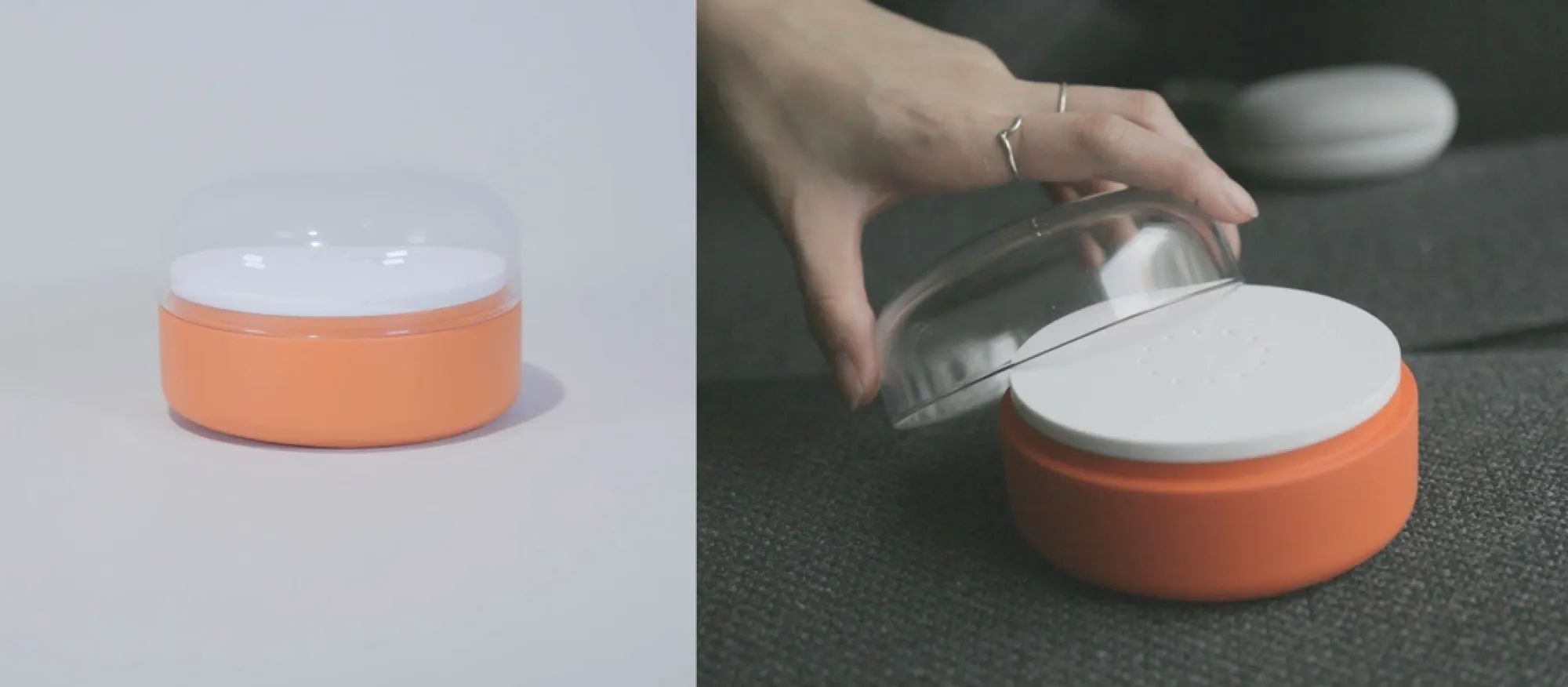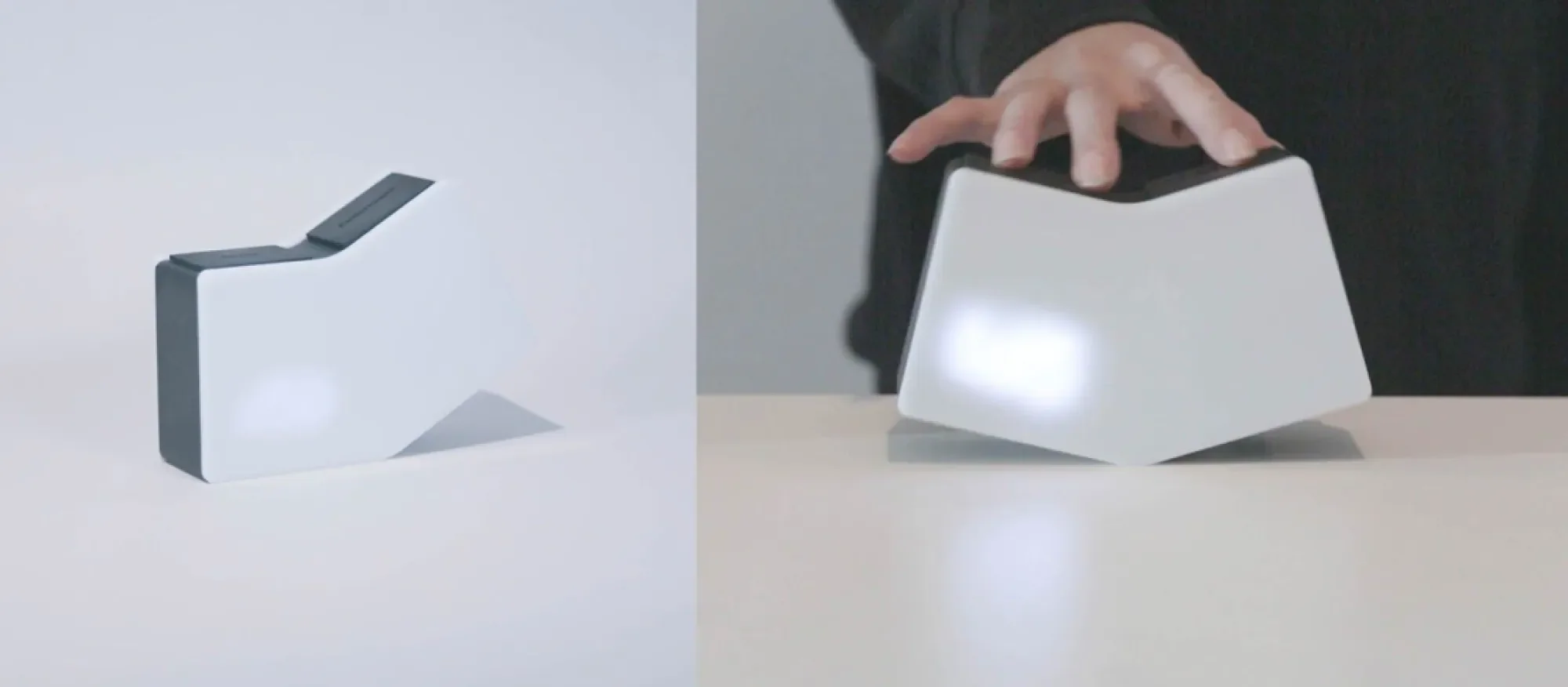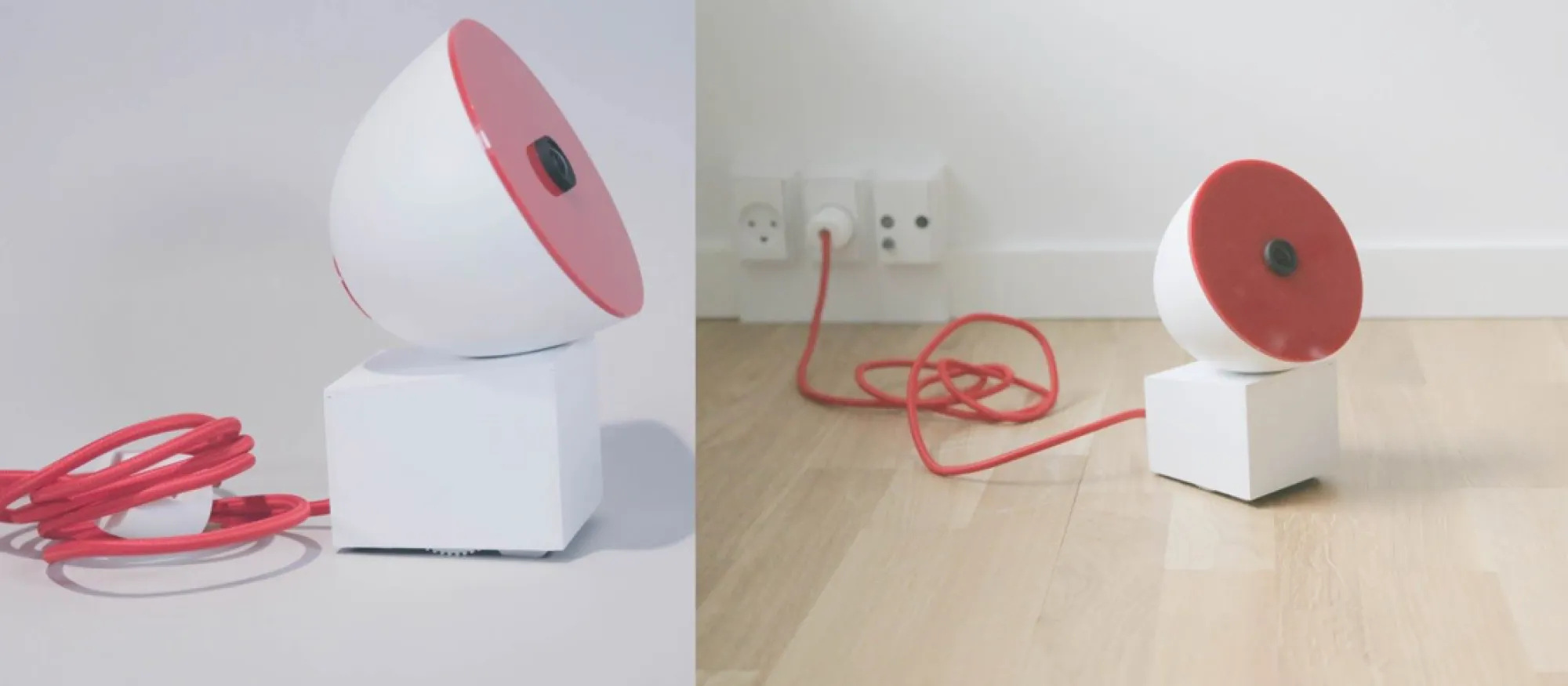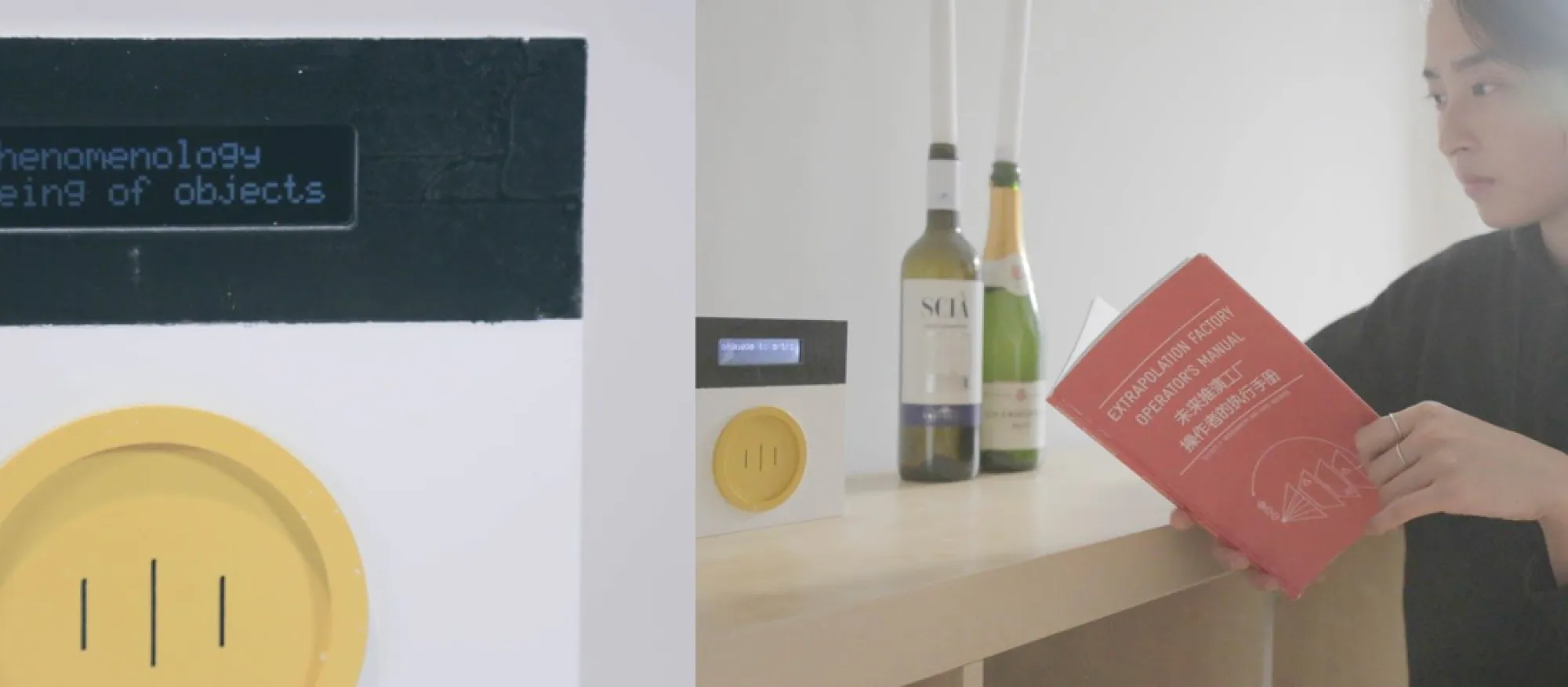By Yuxi Liu, M.F.A.
Introduction
As artificial intelligence (AI) becomes ubiquitous in our everyday life, machines are increasingly powered to learn, reason, and make decisions, manifesting more agencies. The predominant notion of dominance of the human-machine relationship is therefore more and more challenged. Given the capacity for constant learning, the outcomes of AI systems are becoming less predictable, leading to evolving and improvised interactions. Faced with challenges posed by this paradigm shift, human-centered design approaches become insufficient. This also, on the other hand, introduces opportunities for reimagining design conventions and exploring new methods and practices.
Five Machines explores alternative narratives of coexistence and coevolution between humans and machines. Informed by object-oriented ontology theories, the project investigates more-than-human-centered approaches to human-machine interactions and presents five prototypes that articulate new modes of thinking about, and interacting with, machines that allow for serendipity.
A shift toward machine-centered design
Toward More-than-human-centered Design
The notion of human-centered design has dominated the design field for decades. By placing human users in the center of design processes, the approach enables designers to focus on the human experience and address problems to meet users’ needs. However, its lack of consideration of the interdependence of humans and nonhumans often contribute to ecological imbalances and social inequalities. In an age of social and ecological crises, human-centered design is becoming insufficient and untenable.
To move beyond human-centeredness, it is worth looking at theories such as object-oriented ontology. It rejects privileging human existence over nonhumans and suggests that objects exist independently of human perception. This offers interesting new ways of thinking about the nonhuman entities around us as well as our relationships with them. We are also witnessing a growing interest in the more-than-human perspective in the design community. Increasingly, designers and scholars are critiquing human-centeredness, challenging ontological dualism, emphasizing entanglements of humans and nonhumans, and exploring alternative ways of being, knowing, and doing (Schmeer, 2019; Jain, 2019; Clarke, et al., 2019).
Drawing insights from these theories and practices, this project investigates more-than-human-centered design within the context of machine intelligence. In doing so, the project aims to contribute to this paradigm shift by redirecting the focus on human agencies to the complex entanglements of humans and machines, engaging machines to gain multiple perspectives suggesting new relationships and interaction patterns.
Machine-centered Design as Experimentation
A reimagining of the relationship between humans and machines demands more-than-human perspectives. In their project Lichtsuchende, Murray-Rust and von Jungenfeld (2017) ask: “As our society puts increasing emphasis on algorithmic structuring, how can we understand the imaginaries of intelligent things around us, as distinct from structures that give rise to them and the narratives offered about their use?” Can shifting the focus toward machines lead to new narratives and methods?
In search of design possibilities, I contacted a machine ethnography study, attempting to gain a better understanding of what it means to be a machine—and more importantly, what machines need to be themselves. As a branch of anthropology, ethnography uses qualitative methods such as detailed observations and unstructured interviews to give an account of people’s social lives and culture. Can we draw from these methods and use them in a “machinography” study? What would “machinography” reveal?
To answer these questions, I did a series of experiments, including interviews with intelligent machines, co-creation with an attentional generative adversarial network, prototyping an explainable machine, etc. These experiments might not help fully gain access to machines’ perspectives, but as a way of experimentation and provocation they offered an interesting starting point for future work.
Five Machines
The machine ethnography experiments also helped redefine the goal of the project, as machine-centered design is not about privileging machines over humans, but how to better understand them and build an “equal” relationship. Applying object-oriented ontology to design practices can be challenging. In translating the ontological thesis into a contextual framework, context and narrative matter. Five prototypes were built to explore potential forms of this new relationship, turning abstract concepts into concrete scenarios. With the focus on domestic space, topics such as privacy, collaboration, energy, etc. were examined as focal points to provide situated contexts.
Machine 1
Although concern about data privacy is rapidly increasing along with ubiquitous yet still advancing surveillance technologies, personal data collection occurs not only online, but is spilling over into the physical world. Reflecting on this context, Machine 1 explores the potential of an object respecting and protecting personal privacy. It generates noise to interfere with voice assistants, making collected data less actionable and creating a more assured private sphere. Drawing inspiration from the musicBottles (Ishii, Mazales, & Lee, 2001), Machine 1 uses the metaphor of a cork: noises are “contained” in the machine and the action of removing the lid activates it, releasing the sound it generates. Machine 1 can’t decide when to work, but it can control what it generates—white noise, sounds, and sometimes surprising murmurs.

Machine 2
Machine 2 looks at human-machine collaboration and trust building in creative processes. Competence is an important dimension of trust among humans—can a learning machine with creative expertise augment or even direct our work? Machine 2 is built with the intent of articulating opinions. It works alongside the human by watching over the shoulder, observing the process, gathering relevant data, making associations, and articulating its suggestions, comments, or critiques through voice interactions.

Machine 3
Intelligent machines are increasingly contributing to global energy consumption as the training of AI models tends to be an energy-intensive process. Machine 3 envisions a scenario in which humans could collaborate with environmentally conscious machines towards the greater good. Machine 3 has the intent of trading energy. Through a peer-to-peer platform, it could actively manage energy consumption, production, and storage, communicating with machines in other households and the grid. Although these activities are autonomous, the human actor could set the overall goal, such as money-oriented or environment-oriented trading, through a tangible interface that would display the transaction history accordingly.

Machine 4
Machine 4 longs for serendipity. Having a sense of curiosity, it moves around to search for serendipitous moments. Yet its autonomy is physically constrained by its power cord, as with a leash to a dog. Sometimes it silently observes; sometimes it looks for new adventures. Once a serendipitous moment is captured, it sends the picture back to its human friend.

Machine 5
With a larger training dataset and more advanced model, AI-generated texts are becoming more coherent and convincing. While some people are concerned about its potential misuse, Machine 5 imagines a different scenario. Can a machine help us reflect through unpacking our thoughts? Machine 5 is trained on philosophy work and asks questions in a Socratic manner. The metaphor of a book represents knowledge and is reflected in its form factor. The display constantly shows the generated text. Once the human actor starts looking at and perhaps reading out the text, the machine reacts through the voice interface. It looks for contextual clues in the human actor’s response and asks questions accordingly to provoke conversation or debate.

Discussion
Open-endedness
Five Machines articulates collaboration and coevolution rather than competition and domination. Although these machines are designed with certain intents, given the non-deterministic nature of machine intelligence, their behaviors can be constantly evolving. Thus at the core of these interactions is the open-endedness that allows for uncertainty and unknowns, and the potential to yield surprises. Through the interplay between agency and control of both human and machine entities, power dynamics are rebalanced to create equal space for communication and imagination.
Otherness
Although we tend to readily attribute human traits to machines, in an attempt to move beyond anthropocentrism, the design of these machines, especially regarding form factor, tried to avoid anthropomorphic superficiality—for example, using visual elements such as a smiley face. However, the use of different metaphors helps bridge the gulf between the human and machine entities to facilitate and strengthen interactions. By using voice interfaces, Machines 2 and 5 communicate with people in a human-to-human manner. Clearly we cannot avoid using human terms to interpret machines. But is there real otherness in machines that are built by and learning from us humans? Can the otherness inform new vocabularies and patterns of interactions that go beyond anthropomorphism? These questions open up space for future exploration.
Machine ecologies
This project has mainly focused on individual machines and their behaviors and interactions. However, any intelligent machine has a complex system behind the scenes that involves multiple factors such as data, algorithms, human labor, etc. Another future direction could be to move beyond these machines’ physicality and take their ecologies into consideration, expanding our understanding of the interdependence between different entities. In this way, I hope, a multiplicity of perspectives could contribute to broadening our understanding of more-than-human worlds.
Yuxi Liu is an interaction designer and researcher. She holds an MFA in Design Informatics from the University of Edinburgh and is an alumna of Copenhagen Institute of Interaction Design.
References
Clarke, R., Heitlinger, S., Light, A, Forlano, L., Foth, M., & DiSalvo, C. (2019). More-than-human participation: design for sustainable smart city futures. Interactions, 26(3), pp. 60–63.
Ishii, H., Mazales, A., and Lee, J. (2001). Bottles as a minimal interface to access digital information. In Proceedings of Extended Abstracts of Human Factors in Computing Systems (CHI 2001) ACM Press , pp. 187–188.
Jain, A. (2019). More than humancentered design. Ding Magazine. Retrieved from https://dingdingding.org/issue-2/more-than-humancentered-design/
Murray-Rust, D., and von Jungenfeld, R. (2017). Thinking through robotic imaginaries. In Proceedings of the 3rd Biennial Research Through Design Conference, 22–24 March 2017, Edinburgh, UK, Article 14, pp. 211–227.
Schmeer, J. (2019). Xenodesignerly ways of knowing. Journal of Design and Science. Retrieved from https://jods.mitpress.mit.edu/pub/6qb7ohpt

